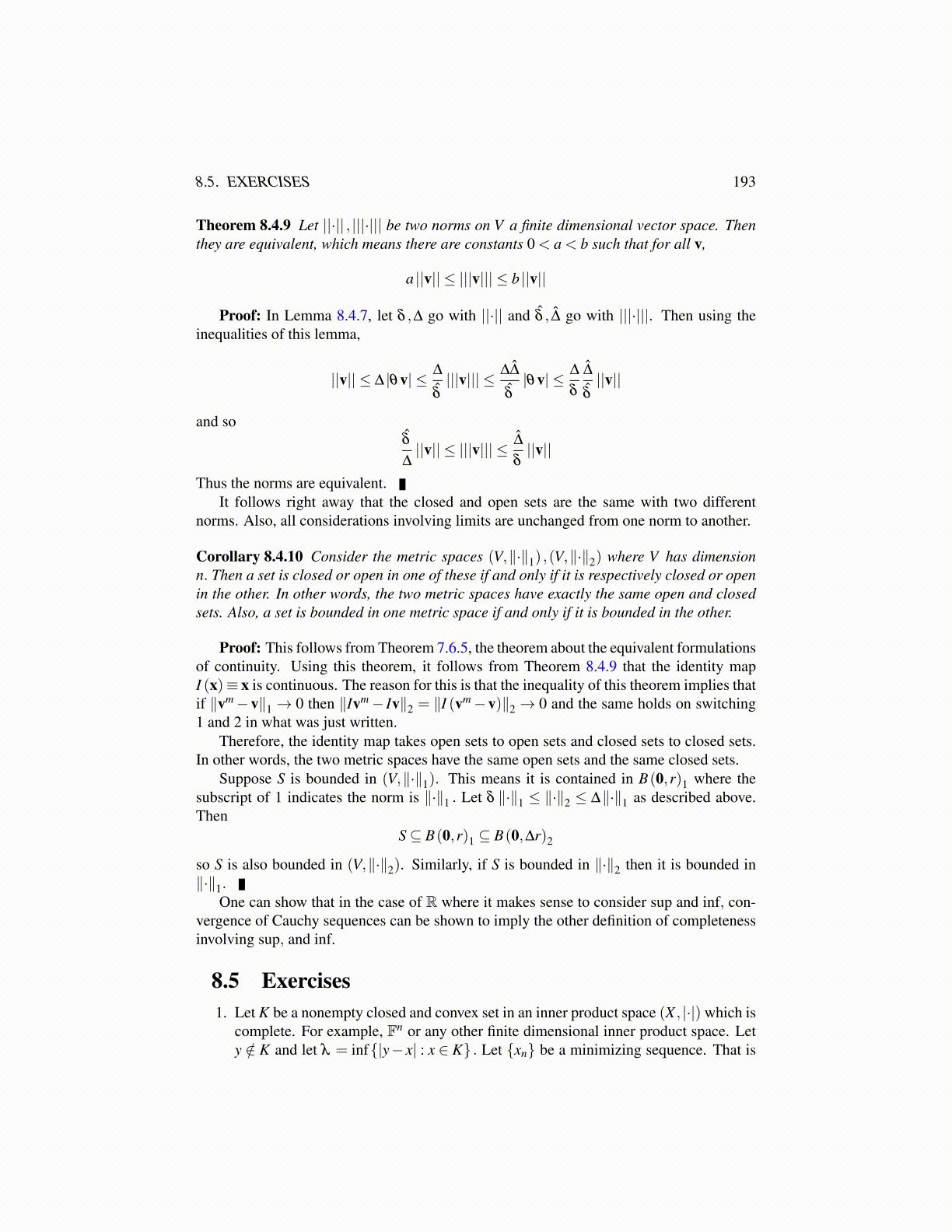
8.5. EXERCISES 193
Theorem 8.4.9 Let ||·|| , |||·||| be two norms on V a finite dimensional vector space. Thenthey are equivalent, which means there are constants 0 < a < b such that for all v,
a ||v|| ≤ |||v||| ≤ b ||v||
Proof: In Lemma 8.4.7, let δ ,∆ go with ||·|| and δ̂ , ∆̂ go with |||·|||. Then using theinequalities of this lemma,
||v|| ≤ ∆ |θv| ≤ ∆
δ̂|||v||| ≤ ∆∆̂
δ̂|θv| ≤ ∆
δ
∆̂
δ̂||v||
and soδ̂
∆||v|| ≤ |||v||| ≤ ∆̂
δ||v||
Thus the norms are equivalent.It follows right away that the closed and open sets are the same with two different
norms. Also, all considerations involving limits are unchanged from one norm to another.
Corollary 8.4.10 Consider the metric spaces (V,∥·∥1) ,(V,∥·∥2) where V has dimensionn. Then a set is closed or open in one of these if and only if it is respectively closed or openin the other. In other words, the two metric spaces have exactly the same open and closedsets. Also, a set is bounded in one metric space if and only if it is bounded in the other.
Proof: This follows from Theorem 7.6.5, the theorem about the equivalent formulationsof continuity. Using this theorem, it follows from Theorem 8.4.9 that the identity mapI (x)≡ x is continuous. The reason for this is that the inequality of this theorem implies thatif ∥vm−v∥1→ 0 then ∥Ivm− Iv∥2 = ∥I (vm−v)∥2→ 0 and the same holds on switching1 and 2 in what was just written.
Therefore, the identity map takes open sets to open sets and closed sets to closed sets.In other words, the two metric spaces have the same open sets and the same closed sets.
Suppose S is bounded in (V,∥·∥1). This means it is contained in B(0,r)1 where thesubscript of 1 indicates the norm is ∥·∥1 . Let δ ∥·∥1 ≤ ∥·∥2 ≤ ∆∥·∥1 as described above.Then
S⊆ B(0,r)1 ⊆ B(0,∆r)2
so S is also bounded in (V,∥·∥2). Similarly, if S is bounded in ∥·∥2 then it is bounded in∥·∥1.
One can show that in the case of R where it makes sense to consider sup and inf, con-vergence of Cauchy sequences can be shown to imply the other definition of completenessinvolving sup, and inf.
8.5 Exercises1. Let K be a nonempty closed and convex set in an inner product space (X , |·|) which is
complete. For example, Fn or any other finite dimensional inner product space. Lety /∈ K and let λ = inf{|y− x| : x ∈ K} . Let {xn} be a minimizing sequence. That is